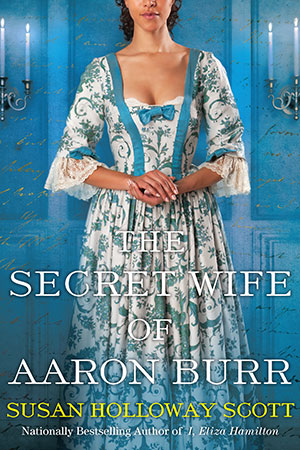Susan reporting,
You didn't really think I'd let the 214th anniversary of the duel between Alexander Hamilton and Aaron Burr pass unnoticed, did you? Especially since July 11, 2018 also falls on a Wednesday, just as it did in 1804. I've already written a post here about the duel itself. This one is about how, within hours of the duel, the first ripples of shock and grief are already beginning to spread through a close-knit family that would never again be the same.
There's nothing quite like an original letter from the past. The majority of surviving letters related to Alexander Hamilton, his wife Eliza Schuyler Hamilton, and her family have been transcribed and are available online on various sites. There's no doubt that this is convenient. It's much easier to read a modern transcription than to decipher the often-faded handwriting of long ago, with its dips and swirls and often-idiosyncratic spelling and punctuation. It also helps protect the originals from the wear and tear of being removed from preservation storage for repeated study.
But....
There's so much more to be learned from a handwritten letter than the words alone. Handwriting can reveal the writer's emotions, fears, and wishes, the urgency with which she or he wrote, or the care they took in choosing just the right word or phrase. I can't think of a better example than the letter above. (Please click to enlarge, and my apologies for the unavoidable reflections.)
The author of this letter was Angelica Schuyler Church, the eldest sister of Eliza Schuyler Hamilton, the wife of John Barker Church, and the sister-in-law to Alexander Hamilton. Angelica was a well-read, well-traveled, and well-educated 18thc woman, and many of her surviving letters are filled with ideas and thoughts, descriptions of where she has visited and whom she has met, and, depending on her correspondent, often a dollop of flirtation as well. But not here.
Angelica wrote this letter on the morning of July 11, 1804, shortly after Alexander had been rowed back across the Hudson River from New Jersey, where the duel had taken place, to New York City. The duel with Aaron Burr had gone disastrously wrong, and had left Alexander gravely injured. But when Angelica wrote this letter to her younger brother Philip Schuyler in Albany, she had clearly just arrived at the house of Alexander's friend William Bayard, where the injured Alexander had been brought. Given the severity of his wound and the amount of blood he'd already lost, it's hard to understand her optimism for his recovery, but perhaps the attending physician was putting the best face on the situation for Angelica and her sister Eliza, who is also already at her dying husband's bedside.
Or perhaps Angelica did know. The letter was clearly written in haste and anxiety, the words dashed across the page. The two passages that she underlined - wretch Burr and expression of grief - are probably the most revealing ones in the entire letter. And because we know what happened after the letter was written, they're also among the saddest.
Here's a transcription:
at Mr. Bayards Greenwich
Wednesday Morn July 11, 1804
My dear Brother, I have the painful task to inform you that General Hamilton was this morning wounded by that wretch Burr, And we have every reason to hope that he will recover. May I advise that you repair immediately to my father as perhaps he may wish to come down. My dear sister bears with saintlike fortitude this affliction. The Town is in consternation, and there exists only the expression of Grief & Indignation. Adieu my dear Brother. Remember me to Sally. Ever Yours,
A. Church
This letter belongs to The Gilder Lehrman Institute of American History, and is currently on loan and on display in the exhibition Hamilton: The Constitutional Clashes That Shaped a Nation at the National Constitution Center in Philadelphia, PA. The exhibition runs until December 31, 2018; see here for more information. Many thanks to Jessie Serfilippi of the Schuyler Mansion for her assistance with this post.
Read more about Eliza Schuyler and Alexander Hamilton in my latest historical novel, I, Eliza Hamilton, now available everywhere.
Laws Concerning Women in 1th-Century Georgia
10 months ago













 One of us --
One of us -- 


